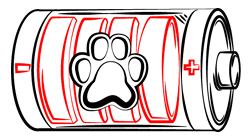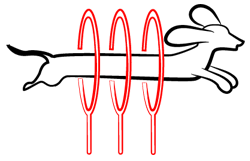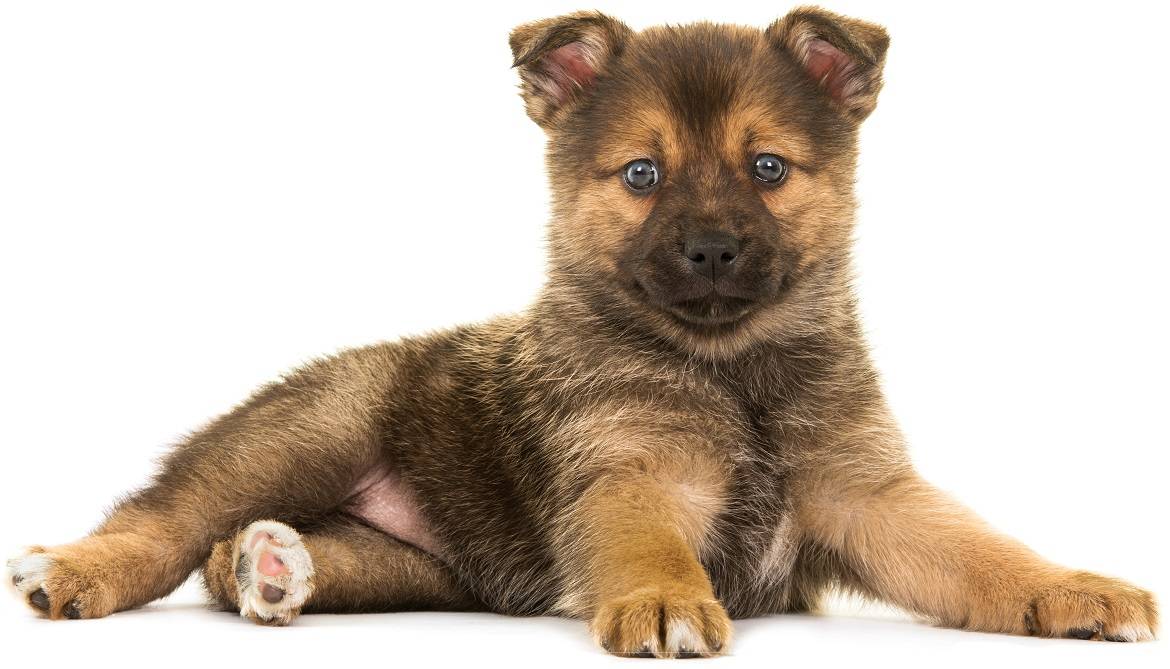
Paws ‘N’ Pups Quickview
Size
| Energy Level
| Trainability
| Paws ‘N’ Pups Rank
|
Pomsky Characteristics
| Physical Characteristics: Height: 13-19” Weight: 15-30 lbs. Energy Level: High | Health & Longevity: 13-15 years Breeders screen for the following conditions:
|
Pomskies are often found in the following colors:
| Husky markings are most desirable. Coat patterns can be:
|
Since the Pomsky is a cross of two very differently sized breeds, the larger husky and the small Pomeranian, size and weight can vary tremendously. To accomplish safe breeding and whelping, male Pomeranians are bred to female Siberians. This typically produces dogs in the 15-30 lb. range. However, in an attempt to produce dogs closer to the toy-size Pomeranian, some breeders are breeding dogs 75% Pomeranian (rather than half Husky, half Pomeranian); these dogs may be considerably smaller, weighing in at 10-15 lbs. It is important to remember that most breeders cannot guarantee size; a throwback is always a possibility in such a new crossbreed.
Pomsky Temperament & Train-ability
One of the newer additions to the “Designer” breed category, Pomskies are highly energetic, intelligent and playful dogs. Loving and friendly with their families, care should be taken to properly socialize puppies as many Pomskies can become wary of strangers and overly protective of their people. Personalities vary widely within any breed, and when two breeds are crossed, the variance can be even larger. Breeders are still working to standardize the look and temperament of the Pomsky, and until that happens, there will be some dogs that favor more Pomeranian traits while others take after their Husky relatives. This is true of their physical appearance as well as personality traits. Careful observation of the dog(s) you are considering will tell you which type the dog is.
Because of their tendency toward a high prey drive and their smaller stature, Pomskies are typically better suited to adult homes or those with older children. The particularly small, toy-sized Pomskies are not a good match for homes with toddlers; between the dog’s prey drive, high activity levels and smaller size, the potential for injury to toddler and dog are high. Many of the larger Pomskies love children and are quite appropriate with them. However, this is another area where there is great diversity; some breeders have found the Pomskies to be excellent with children. If you have young children and wish to add a Pomsky to your family, the ideal course of action would be to visit a breeder. Meeting adult dogs will give you a better idea what to expect, and the tendencies of a particular breeder’s lines, along with their input, should help you decide whether they are a good match for your family. At the end of the day, the compatibility of an individual dog to an individual family is the most critical thing to consider.
These small dogs need a fair amount of exercise and mental stimulation, and without it, many can become destructive and neurotic. A mixture of physical exercise and training usually keeps them healthy and happy. Many Pomskies are quite vocal and can be barkers, which makes these dogs unsuitable for apartment living. Since they may not realize their small size, care should be taken to teach them how to interact with other dogs to ensure their safety.
Being highly intelligent and sometimes independent earns some Pomskies the reputation for being “stubborn”, although this label usually indicates dogs that do not respond well to traditional, force-based training. Typically, dogs that tend toward an independent nature respond much more favorably to positive reinforcement training methods, and can actually be a very willing partner.
The escape-artist tendencies that Huskies are known for live on in many Pomskies. However, their smaller size makes them less likely to jump over the standard 6’ fence. It is still recommended that they be kept in a secure yard, and shorter fences may not be enough to keep these athletic dogs contained.
Pomsky Grooming
The Pomsky sports a beautiful coat, whether they have a more Siberian coat or one closer to a Pomeranian’s. Typically soft and fluffy, theirs is the double coat that is the hallmark of the northern breeds. Expect year-round shedding, with extra heavy coat fall in the spring and autumn. Keeping a Pomsky’s coat at it’s best requires a lot of brushing or professional grooming every 2-3 months. Ears must be cleaned regularly, and toenails may need to be trimmed. Teeth should also be checked and cleaned as necessary.
Traits shared by both the Husky and Pomeranian, which makes them almost guaranteed in the Pomsky are a curved tail and upright, prick ears. While the breed is still in the development stages, all other aspects are somewhat unpredictable. Time will tell where breeders take this new cross.
Pomsky Diet
Because size varies so much in the Pomsky, feeding amounts will vary just as much. For those particularly petite dogs, you may feed as little as ½ cup per day. Those closer to the 30 lb. mark will require more, perhaps 1-1 ½ cups. A high-quality diet will give your Pomsky the best quality of life. Where allergies exist, it may be necessary to feed a hypoallergenic food. A constant supply of fresh, clean water must always be available.
Looking for a Pomsky?
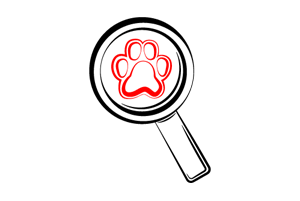 Find A Pomsky Breeder | 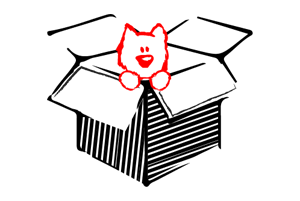 Pomsky Puppies For Sale | 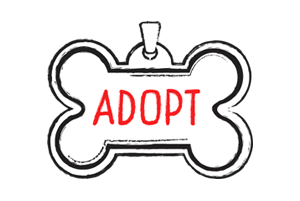 Adopt A Pomsky |
Pomsky Cost
Being so new, Pomsky breeders are commanding some of the highest prices on the market. Expect to pay easily $2,000 and upwards of $4,000 for those possessing highly desired traits. If you have your heart set on a particular color and gender, or one of the extra-small dogs (particularly with husky markings), plan on paying a premium price.
Ongoing expenditures include the typical supplies, food, and regular vet visits. Additionally, you may need an extra supply of chew and food-dispensing toys to keep your busy Pomsky occupied.
Paws ‘N’ Pups Ranking
Paws ‘N’ Pups ranks every breed out of 4 with 1 being easiest to integrate into your life and 4 being the toughest – The lower the ranking the better.
Ranking takes into account a few basic factors such as cost, skill level needed, high vs low maintenance, and how critical regular training is to success. The Pomsky rates a 3, primarily due to their cost, scarcity, and a moderately high level of maintenance; they are very active, and some may be destructive if not kept busy.
Breeds Similar To Pomsky
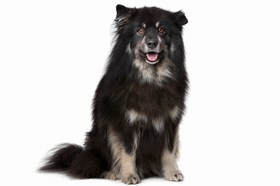 Finnish Lapphund | 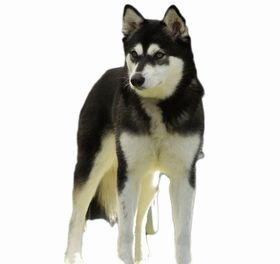 Alaskan Klee Kai | 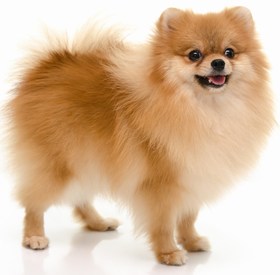 Pomeranian | 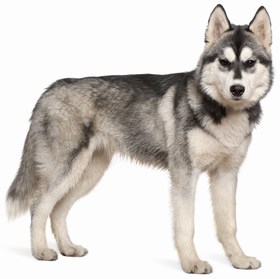 Siberian Husky |


